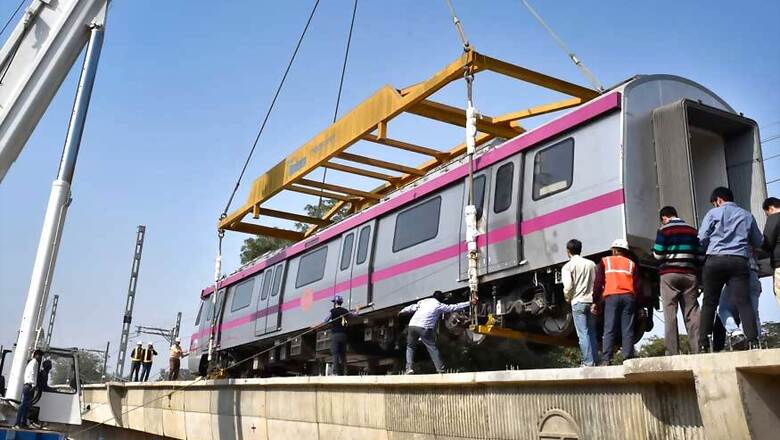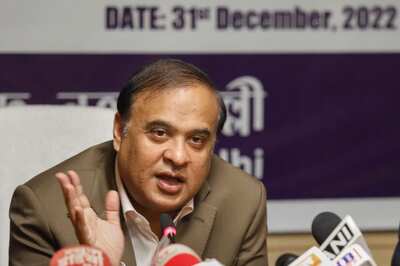
views
New Delhi: If the phase 3 of Delhi Metro would have been completed on time it would have resulted in 140,000 lesser cars on the streets of Delhi. The delay hurts the most now as the city is gasping for breath with a smog cover enveloping it.
Delhi Metro Rail Corporation (DMRC) has set April, 2018 as the fresh deadline for the completion of its longest upcoming corridor, named as the Pink and Magenta lines. Originally the project was supposed to be completed by December 2016.
The first leg of the project was supposed to be operational by December 2015. Trial runs between the Kalindi Kunj and Kalkaji Mandir section of the Magenta Line started in August 2016 with no successful run on the tracks.
According to DMRC data, average daily ridership in 2016-17 was 2.76 million with network length being 213 km. Had phase 3 been functioning in the national capital region, network length of 160 km would have been added, raising the average ridership many-fold.
According to Deepak Kumar, junior engineer (electrical), DMRC, on average a Delhi Metro coach has a seating capacity of 42-50 depending upon the type of coach and around 318 people can stand, taking the total number of passenger intake to 360.
A spokesperson of DMRC also said that 2500-3000 people travel on a single metro.
Now, if we were to compare the same passenger intake to cars, taking 4 passengers per car, there will be 90 cars for each coach plying on the roads and 700 cars for each Metro train. Similar being the number in terms of auto-rickshaws.
With 200 Metro trains cutting across the newly-constructed 160 km stretch, it would have taken 1,40, 000 cars off the streets.
Comparing emission levels of cars with Delhi Metro, according to Central Pollution Control Board (CPCB), a Bharat Standard IV compliant passenger car emits 1.0 g/km of carbon monoxide (CO) and 0.18 g/km of nitrous oxide, both harmful gases for the respiratory system. On the other hand, a Metro ride is fully electrical and pollution free. Had phase 3 been functional 140 kg/km of CO would be lesser in the air of the city on a daily basis.
“Phase 3 is taking a forever to materialise. The delay has had visible impacts on the environment. The number of petrol and diesel run vehicles that could have been reduced is anywhere between 1.4 lakh to 2.4 lakh. The other significant problem is the dust coming out of ongoing construction activities. What is worse is these activities are neither covered nor barricaded which allows the dust to easily mix with the atmosphere creating further problems,” said Rohot Pathania, Programme Manager, Energy Group, Centre for Science and Environment.
According to a study published by Delhi School of Economics, Delhi Metro accounted for 35% reduction in carbon content in the air within a span of two years.
On the directives of Chief Minister Arvind Kejriwal, DMRC has increased the number of trips from 3,131 to 3,317 and increased parking rates. While both of them are progressive moves, a lot is left to be done.
“What is interesting is, the delay in Metro construction has come at a time when the city needed the transporter the most. It is common knowledge that a Metro works positively towards reducing air pollution. Also, now because of the delay and the construction activity on, it is adding to the smog,” said D K Shrivastava, chief economic advisor, EY.
Are we future ready?
Stubble burning is going to be an issue every year till the state governments of Punjab and Haryana find a viable solution. Therefore it is important that the Delhi government resolves internal issues first.
Phase 4 of the Delhi metro is also caught in delays. The cost required is likely to increase by Rs 6,000 crore as the Centre and the Delhi government are yet to decide whether Japan International Cooperation Agency (JICA) will be the funding agency or not. Additionally, DMRC will have to prepare detailed project reports afresh for the new phase by involving private players, mandated under the new Metro policy.




















Comments
0 comment